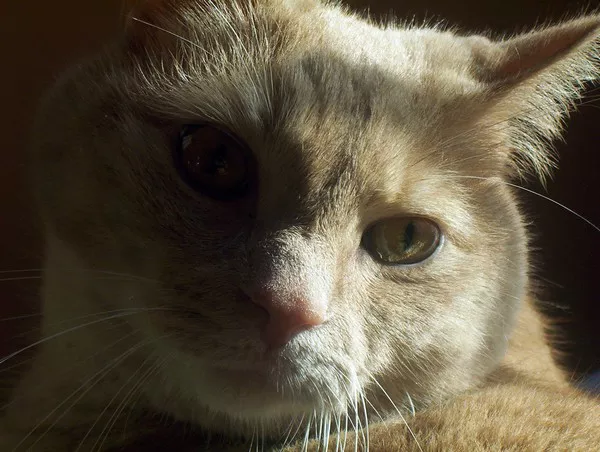COLUMBUS, Ohio – The state Supreme Court is deliberating on whether to reinstate a conviction against Alonzo Kyles, a Cleveland resident found guilty of using bleach on a kitten that had taken shelter in his apartment stairwell. The case, which has raised significant legal and ethical questions, was brought before the court following a series of legal proceedings.
In October 2021, Cleveland police were called to an apartment complex where they discovered an eight-month-old collarless kitten meowing loudly and soaked in bleach. The kitten, found lying in a pool of bleach, had red and swollen paws, which a veterinarian later diagnosed as likely bleach-induced ulcerations. Although the vet confirmed the animal was stressed, it was not in immediate pain. However, the bleach exposure posed a risk of delayed illness or even death. It remained unclear whether the kitten was a stray.
Kyles, 37, admitted to police that he poured bleach to scare the cat away, as he was afraid of it and couldn’t get it to leave the building. He poured bleach down some steps and into the basement hallway, leading to the cat’s exposure to the toxic substance.
Prosecutors charged Kyles under a specific offense for harming “companion animals” rather than a generalized animal cruelty law. The companion animal charge, classified as a felony, carries a six- to 12-month sentence, whereas the non-companion animal charge, a misdemeanor, allows for a sentence of up to 180 days. Kyles was convicted following a bench trial.
The legal crux of the case centers on the definition of a “companion animal.” Ohio law stipulates that no person shall cause harm to a companion animal, defined as “any animal that is kept inside a residential dwelling and any dog or cat regardless of where it is kept, including a pet store.”
The Supreme Court’s deliberations have focused on the interpretation of the term “kept” in the legal definition of a companion animal. The key question is whether “regardless of where it is kept” includes stray cats or if an animal must have a keeper who feeds and tends to it to qualify as a companion animal.
Justice Pat DeWine, during the oral arguments, highlighted the complexity of the grammatical interpretation involved. “I want to thank you because you have made me read more about grammar than I ever wanted to read,” he remarked.
After the initial bench trial, Kyles was convicted. However, the 8th District Court of Appeals reversed the conviction, interpreting “kept” to mean that a companion animal must be cared for by a person. This interpretation marked the first time an appellate court in Ohio had arrived at such a conclusion.
Tasha Forchione, representing the Cuyahoga County Prosecuting Attorney’s Office, argued for a broader definition, including stray or unhoused cats as companion animals. “Any dog or cat is a companion animal,” she asserted.
In contrast, Stephen Hardwick of the Ohio Public Defender’s Office contended that an animal must have a keeper to be considered “kept.” He urged the justices to either uphold the lower court’s decision or remand the case to review whether Kyles caused the animal serious physical harm. Hardwick argued that the issue of whether pets should receive stronger legal protection than strays should be addressed by lawmakers, not judges.
Judge Sean Gallagher, concurring with the decision to overturn Kyles’ conviction, criticized the insufficiency of a misdemeanor charge for Kyles’ actions. He suggested that the legislature should revisit the statutes, implying that the current legal framework creates an unequal protection standard for animals.
“The legislature may want to revisit these statutes,” Gallagher wrote. “As of now, the Orwellian standard that ‘all animals are equal, but some animals are more equal than others’ unfortunately holds.”
The Ohio Supreme Court’s impending decision will have significant implications for the legal status of stray animals and the interpretation of companion animal protection laws. The case underscores the complexities and nuances of animal welfare legislation and the ethical considerations surrounding the treatment of stray and domestic animals.



























